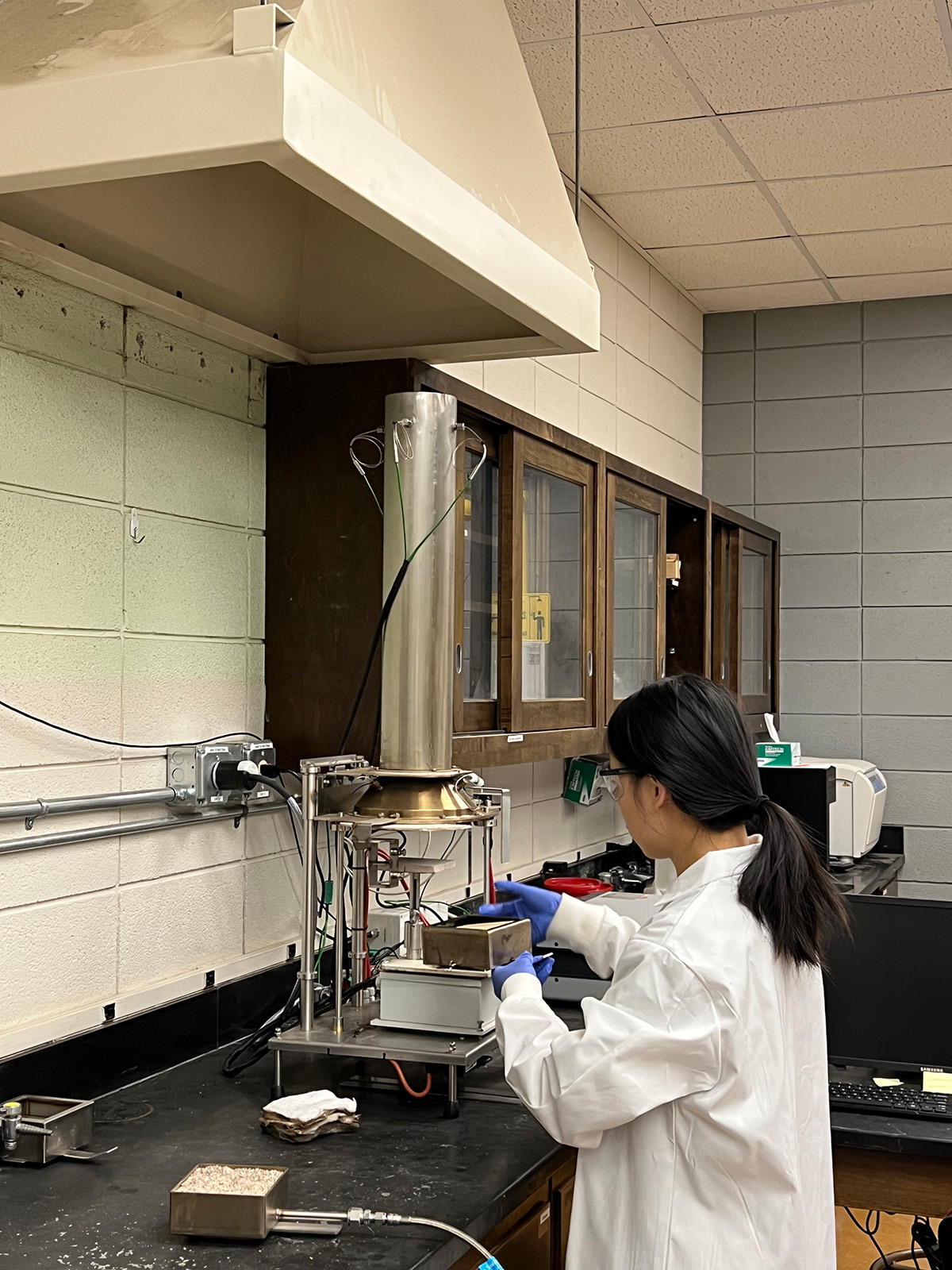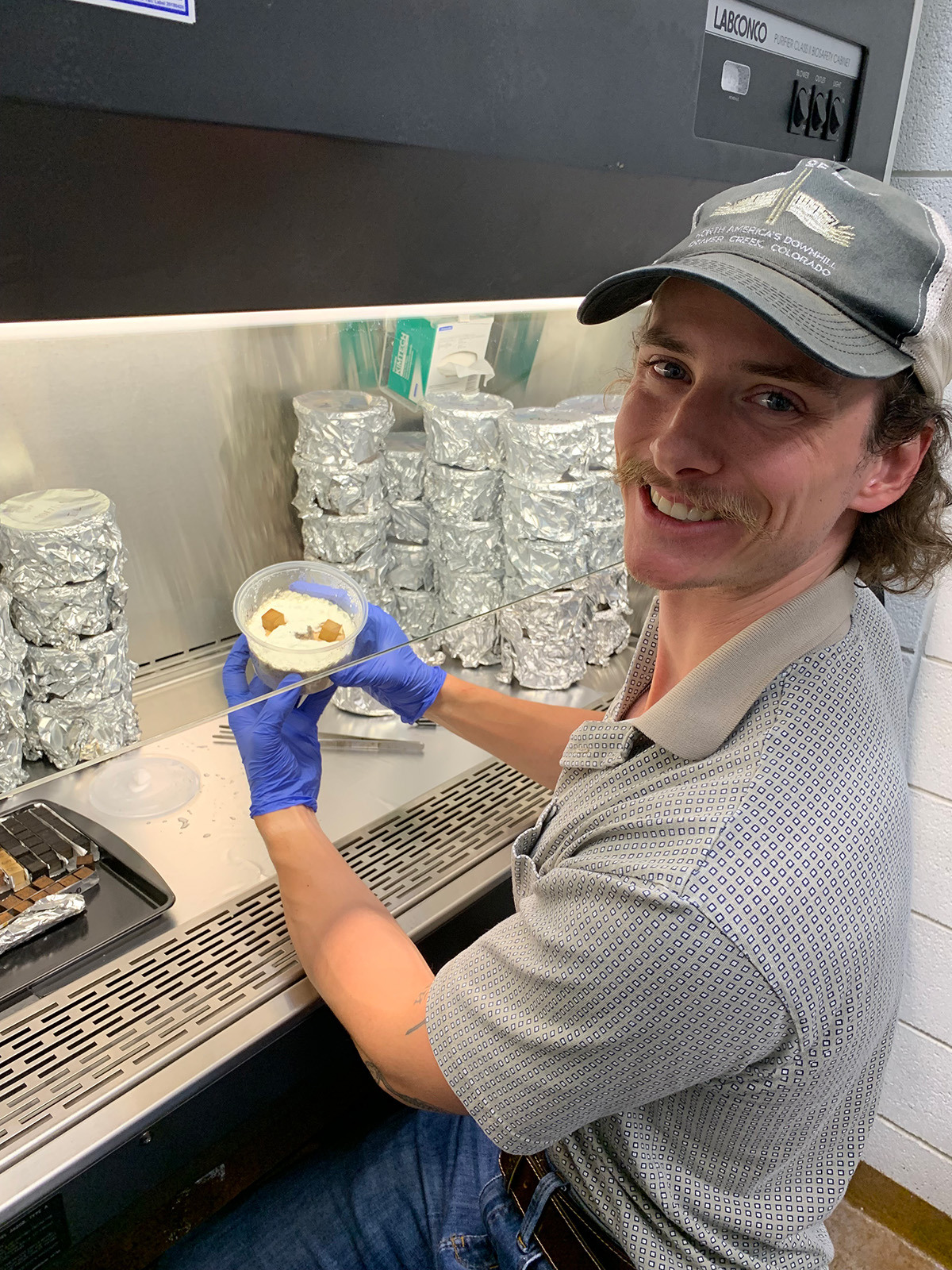Sustainable wood preservation offers innovative solutions for longer-lasting, eco-friendly materials
Lili Cai’s work paves the way for greener building practices by turning waste into sustainable solutions for wood preservation
Lili Cai’s passion for sustainable wood science and engineering started in Fuzhou, China. Put on a project to recover a sunken ship off the China Sea coast for display in a museum, Cai found herself interested in the way that we preserve natural resources for future generations.
“I found that preservation perspective very cool. We are not just protecting the wood for construction, but also to preserve history for the future,” she said.
Years later, Cai joined the College of Natural Resources at University of Idaho in 2019 after completing a doctorate in wood and wood composite protection from Mississippi State University. As an assistant professor of forest and sustainable products, she is involved in extensive research relevant to wood preservation and engineering for North Idaho’s forest products industry.
Wood has been, and still is, extensively used in construction. Natural materials, however, have their drawbacks. Wood tends to decay and is susceptible to fire and termites. Cai is working with her colleagues to find environmentally friendly solutions to extend the service life of wood used in construction and reduce carbon emissions from the building sector.
Lili Cai, Ph.D.
Assistant Professor of Forest & Sustainable Products
The first project Cai had funded by the U.S. Department of Agriculture National Institute of Food and Agriculture was inspired by her doctoral project and from a previous project working with natural essential oils, which are antimicrobial — and would be helpful in keeping wood microbe-free.
However, essential oils do not stay in wood for long. To experiment with this, Cai and her team introduced zinc oxide, a common ingredient in sunscreen, to the essential oils to create a wood treatment. This is very similar to dental cement and is stronger than the wood itself. By doing this, the team was able to introduce a new type of cement to give the wood antifungal and fire-resistant properties.
Cai’s second project deals with potato peel waste.
“What is the most well-known resource in the state of Idaho besides the forest?” she said.
Potatoes, of course.
Cai wondered how she could find extra potential in potatoes before coming upon the answer: She learned that peels from food products such as french fries and potato chips have a lot of helpful natural components. Cai, in collaboration with CNR Professor Armando McDonald, are focusing on using these components to create wood additives that provide sustainable preservation solutions.
Cai has also done research with the waste from lentils, soybeans and other legumes, which contain a high amount of phytic acid. Phytic acid interferes with human digestion and can cause other health issues unless it is extracted. Cai’s project here focuses on using the phytic acid “waste product” as bio-based fire retardants.
If you can extend the life of those wood materials, you can potentially help with climate change. Lili Cai, assistant professor of forest and sustainable product
Cai is currently working on three USDA grants as well as on grants funded by the National Science Foundation and the Higher Education Research Council’s Idaho Global Entrepreneurial Mission. The latter involves a multidisciplinary project involving researchers from engineering and architecture that aims to produce 3D printed thermoset wood composites, known as PrinTimber, for advance manufacturing in housing construction. Ultimately, this project seeks to learn how to use environmentally sourced materials to make wood materials in construction longer lasting.

Dylan Willard, a doctoral candidate in natural resources, engages with one of those projects under Cai’s guidance. Willard researches possibilities for a completely bio-based wood coating that can withstand weathering and is resistant to fungi and termites. Willard is excited to build upon the knowledge of previous researchers to achieve goals in sustainable housing.
“I really wanted to be a part of a project that has the potential to change the world,” he said.
Cai is thankful to play a role in merging different perspectives to create solutions.
“I feel fortunate to be a part of this project to learn more about multidisciplinary teamwork,” she said. “It really provided an environment for faculty to collaborate and inspire each other.”
The project allows Cai and other researchers to tailor their research to different audiences while capturing the long-term needs of the larger market to get products out in a timely and relevant manner.
Cai stresses the importance of this work to climate health, reporting that 42% of carbon emissions come from construction-related activities in the building sector. Traditional materials, such as concrete, cement and steel, are very carbon-intensive and require significant energy and high temperatures to gather. Using natural materials, on the other hand, helps to offset these emissions.
“If you can extend the life of those wood materials, you can potentially help with climate change,” she said.
In total, Cai has advised four master’s students and five doctoral candidates. One of her doctoral students also completed their master’s degree under her mentorship.
“It’s my sixth year here, and I am thankful for the support I’ve had from the university and colleagues,” said Cai, expressing her excitement for being at University of Idaho to conduct this research and teach her students.
Outside of the university, Cai works to connect with stakeholders in the region, such as companies in Montana and faculty at Washington State University. She has also been an ambassador for Society of Wood Science and Technology.

Three USDA NIFA awards support these University of Idaho projects: Award 2021-67022-34834 for $329,888; award 2022-67022-37607 for $300,000; and award 2024-69016-42552 for $2,851,701, all of which 100% were the federal share
Article by Megan Lolley, CNR writer in residence
Photos provided by Dylan Willard, Lili Cai and University Visual Productions
Published in January 2025









